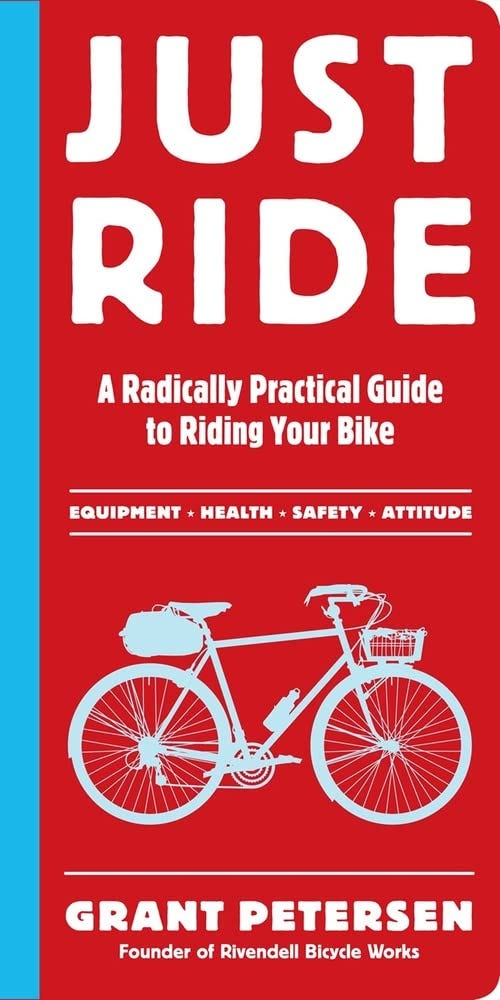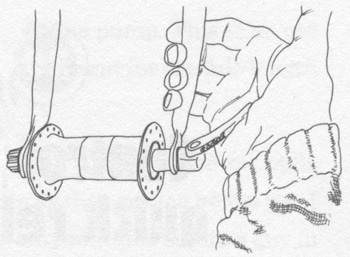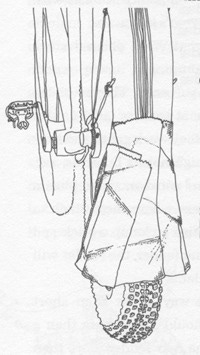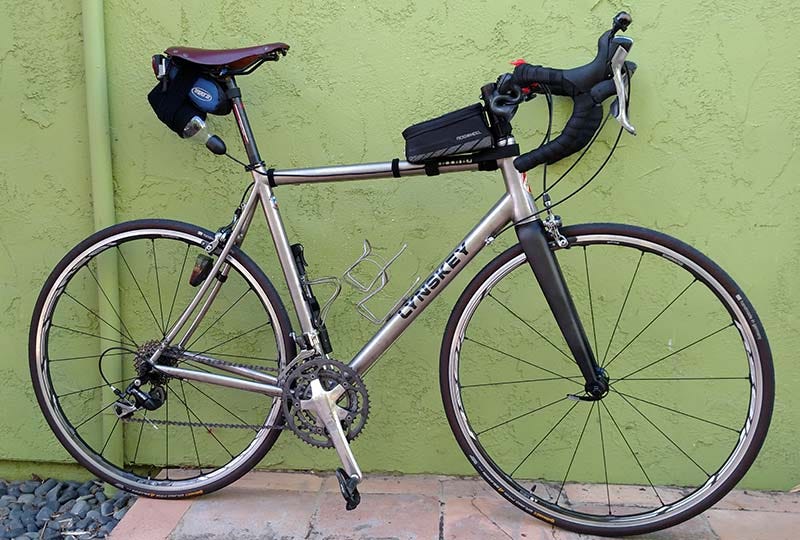Bike Basics
Tools for Possibilities: issue no. 83
Once a week we’ll send out a page from Cool Tools: A Catalog of Possibilities. The tools might be outdated or obsolete, and the links to them may or may not work. We present these vintage recommendations as is because the possibilities they inspire are new. Sign up here to get Tools for Possibilities a week early in your inbox.

Bicycling sanity
This book returns the fun to recreational bicycling. Biking has been taken over by racing style; weekend riders and bike commuters imitate racers in their gear and approach. The author is a long-time bicycle maker, racer, and advocate, and in this manifesto he deflates common bicycling myths one by one. He argues you can wear ordinary street clothes, and that you will be less tired if you don’t use clip in cleats on your pedals, that the weight of the bike does not really matter, baskets are cool to have, plastic saddles are good enough, and so on. I’ve ridden bikes for 40 years, including long-distance touring and everyday commuting, and the common sense Grant Peterson preaches here is both absolutely true and refreshing. If biking seems less fun than it once did, read this. You’ll save a lot of money, and will enjoy riding more. — KK
- I say, wear underwear–even if it’s cotton. That goes against a powerful rumor mill that considers cotton underwear a no-no for any kind of ride beyond a ten-minute commute. The naysayers say it gets wet with sweat; the sweat makes your skin more vulnerable to chafing; the seams are uncomfortable at best and will cause saddle sores at worst.
- The only riders who benefit from clipless pedals are racers, and only because their pedals are so small and slippery. If you don’t ride tiny, slippery pedals, you don’t need stiff, cleated shoes.
The benefits of pedaling free far outweigh any real or imagined benefits of being locked in. They are as follows:Your muscles last longer. Moving your foot about the pedal shifts the load, even if slightly, to different muscles, and spreads the load around. Sprint up the hills on the balls of your feet and, on long-seated climbs, push with the pedal centered almost under your arch. It’s not a turbocharged, magic sweet spot, but it feels better and more natural, and you can’t do it if you’re locked in.You reduce the chance of a repetitive stress injury, because your feet naturally move around more, changing your biomechanics.You get off and on easier at stoplights; there’s no twisting to get out of your pedals, no fussing to get back in.You can walk in stores without walking on your heels. You can run! You aren’t handicapped by expensive and weird-looking shoes. - Whenever a rider gets hit and is being loaded, unconscious, into the ambulance, the driver who hit him will testify to the cops, “I swear, I didn’t see the dude.” If you’re looking brilliant and geeky, you’re more likely to be seen and less likely to get hit, and he won’t have that excuse.
- Grab the fork with your fingers, and use the heel of your hand to close the quick release. The convex side of the lever is labeled CLOSE, and should face outward when you’re finished.Closing the lever properly requires enough force to leave an impression on your hand.


- On a stop-and-go commute, a red light at the wrong time instantly wipes out even a hundred-pound weight difference.On a descent, the heavier bike rider is faster.Light wheels accelerate faster than heavy ones, which helps when you’re taking off from a stop, but heavy wheels maintain more of their momentum than light wheels, which helps you keep your speed on rolling roads and trails.On twenty-five-mile club rides, when you and your club mates are close to the same fitness level, the pack sets the pace, and since you’re riding in a partial vacuum (not fighting the wind), it’s easy to keep up, even with heavier bike and body.
- It’s easy to buy tires with an extra layer of rubber, nylon, kevlar, or something else between the casing and tread to stop thorns. Every extra bit of protection adds weight that will always scare of racers and others under the spell, but for all-purpose Unracing rides, I like extra flat protection. Why not? I’ve fixed at least five hundred flats in my life, I’m really good at it, and I still hate it. Beef up my tires, thank you.

DIY guide to bikes & biking
Sheldon Brown’s Online Cycling Encyclopedia
Whether you’re looking to convert your road bike into a fixed gear or want to learn how a derailer functions, this site has all the info you could ever want — a giant glossary, bits of cycling history and plenty of specific instructions and photos.
His site has helped me purchase, repair and build two road bikes (my Gios Torino and a Tom Ritchey built Palo Alto).
I’ve seen, in the process, just how precise Sheldon’s attention to detail is. I had no idea that there was English and Italian threading. Sheldon has a chart that gives you the measurements for every BB out there, anything from French to Swiss. And I totally didn’t listen to his tip on Italian threaded bottom brackets and paid the price.
Even if you have no interest in working on your bike or going deeper than the basics of maintenance, this site can really boost your understanding of how a bike works (it has in my case) and even how to ride. There are great tips for beginners, including articles like “Everything You Wanted To Know About Shifting Your Bicycle’s Gears, But Were Afraid To Ask.” — Benjamin Gaffney
04/22/24





